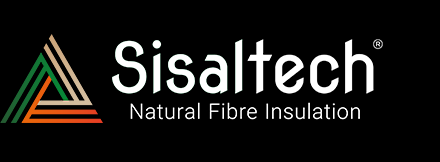Sisalwool insulation, like other natural and sustainable insulation materials, can be used effectively in deep renovation projects to improve the energy efficiency and sustainability of existing buildings. Here’s how sisal wool insulation can be utilised in deep renovation:
* Wall Insulation: Sisalwool can be installed in the walls of the building to enhance thermal performance. It can be used in various forms, such as batts or rolls, and is typically placed between the wall studs. Wall insulation helps reduce heat transfer, making the building more energy-efficient.
* Roof Insulation: Installing Sisalwool insulation in the roof or attic space is essential to prevent heat gain or loss through the building’s roof. Adequate roof insulation can help maintain a comfortable indoor temperature and reduce the need for excessive heating or cooling.
* Floor Insulation: In some deep renovation projects, especially in buildings with uninsulated or poorly insulated floors, sisal wool insulation can be applied to the subfloor or crawl space. This helps prevent heat loss through the ground and keeps the indoor environment more comfortable.
* Sound Insulation: Sisalwool insulation is not only an effective thermal insulator but also a good sound insulator. This can be particularly beneficial in deep renovation projects where soundproofing is required, such as in multi-unit residential buildings or commercial spaces.
* Moisture Management: Sisalwool has natural moisture-regulating properties, which can help manage humidity levels within the building. Proper moisture control is essential for preventing mold and maintaining a healthy indoor environment.
* Non-Toxic and Sustainable: Sisalwool insulation is a natural, eco-friendly, and non-toxic insulation material, making it a suitable choice for deep renovation projects that prioritise sustainability and indoor air quality.
* Air Sealing: Along with providing insulation, sisal wool can also contribute to air sealing when installed properly. A well-sealed building envelope reduces air leakage, which helps maintain consistent indoor temperatures and improves energy efficiency.
In conclusion, Sisalwool insulation emerges as a versatile and eco-friendly choice for deep renovation projects, with a range of benefits that enhance the energy efficiency and sustainability of existing buildings. Whether it’s fortifying walls against heat transfer, safeguarding roofs from temperature fluctuations, or enhancing soundproofing in multi-unit residences, sisal wool insulation proves its worth. Furthermore, its natural moisture-regulating properties foster a healthier indoor environment, while its non-toxic, sustainable nature aligns seamlessly with the growing emphasis on green building practices. As a bonus, Sisalwool insulation not only bolsters thermal performance but also aids in air sealing, maintaining consistent temperatures, and ultimately reducing energy consumption. With these advantages, Sisalwool insulation offers a compelling solution for deep renovation, marrying sustainability and functionality for a brighter and more energy-efficient future in the world of construction.





